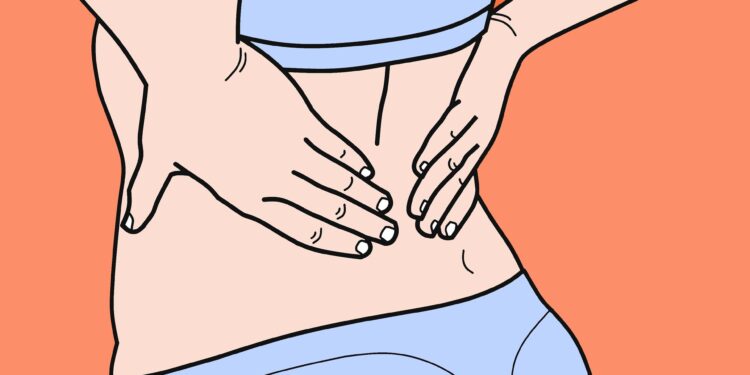Credit: CC0 Public domain
A new Cedars-Sinai study may have unlocked the mystery surrounding the cause of a specific type of back pain. Nearly 40% of the adult population suffers from lower back pain due to degeneration of the discs in the spine, but medical science has not understood exactly why the discs become painful. In a new study published in the journal Scientific translational medicineCedars-Sinai investigators are paving the way for an answer and perhaps a step toward targeted treatment.
“We have identified for the first time particular cells that may be key to understanding disc pain,” said Dmitriy Sheyn, Ph.D., a research scientist on the Board of Governors of the Institute for Regenerative Medicine at Cedars-Sinai. and lead author of the study. study. “Learning more about how these cells work could lead to the possible discovery of new treatment options.”
The bones that make up the spine are interspersed with jelly-filled spacers, called intervertebral discs, which act as shock absorbers. Due to age, overuse or injury, the jelly begins to dry out and degenerate, but that doesn’t mean the disc necessarily becomes painful, Sheyn said.
“This is because the gelatinous inner layers of the discs contain no nerve endings,” said Sheyn, who is also an assistant professor of orthopedics, surgery and biomedical sciences at Cedars-Sinai. “But sometimes when discs degenerate, nerve endings from surrounding tissues invade the disc, and we think that causes pain.”
Several types of cells exist in this gelatinous layer, and when researchers compared cells from patients with painless degenerated discs and patients with disc-associated low back pain, they found that patients with low back pain had greater numbers of a certain cell subtype that could be involved in the onset of pain.
“This represents a major advance in our understanding of disc-associated back pain,” said Hyun Bae, MD, professor of surgery and orthopedics at Cedars-Sinai and co-author of the study. “This is an essential step towards finding a non-surgical biological treatment.”
“Unveiling the key cells behind disc-related pain marks a critical step in reshaping how we approach back pain management,” said Mark Vrahas, MD, president of Cedars-Sinai Orthopedics. “This discovery opens the doors to targeted therapies that could revolutionize orthopedic treatments, offering hope to millions of people around the world.”
In a cell culture dish, investigators subjected healthy cells to conditions simulating disc degeneration, including inflammation, acidity, tension and compression, low glucose and low oxygen, and could transform them into a subtype associated with pain.
The investigators also grew cells in one chamber of a special two-chamber laboratory chip. In the other chamber, they introduced pain-signaling neurons that they had created from stem cells.
When the pain-associated cells were in the chip, pain-signaling neurons in the other chamber grew axons — special fibers that nerves use to send information — toward them. When healthy cells were in the chamber, the neurons did not send out axons.
“We don’t know whether the pain-associated cells attracted the invading neurons or whether the healthy cells repelled it, but there was certainly a difference between the healthy cells and the pain-associated cells.” Sheyn said.
Future treatments based on this new information could focus on reprogramming pain-associated intervertebral disc cells into healthy cells or adding healthy cells to painful discs to overwhelm the pain-associated cells, according to Clive Svendsen, Ph.D., executive director of the Board of Governors of the Institute for Regenerative Medicine at Cedars-Sinai.
“Precisely targeting the ‘bad’ cell subtype or supplementing the ‘good’ cell subtype may provide useful strategies for treating low back disc pain,” Svendsen said. “This study validated some knowledge in classical disc or pain biology and could be a step toward targeted cell therapy that addresses the root causes of low back pain.”
More information:
Wensen Jiang et al, Human nucleus pulposus cells of the intervertebral disc associated with back pain trigger in vitro neurite outgrowth and pain behaviors in rats, Scientific translational medicine (2023). DOI: 10.1126/scitranslmed.adg7020
Provided by Cedars-Sinai Medical Center
Quote: Study links back pain to a subtype of cells in the spine’s ‘shock absorbers’ (December 7, 2023) retrieved December 7, 2023 from
This document is subject to copyright. Apart from fair use for private study or research purposes, no part may be reproduced without written permission. The content is provided for information only.



